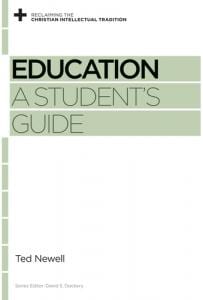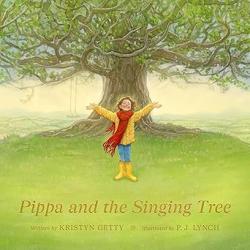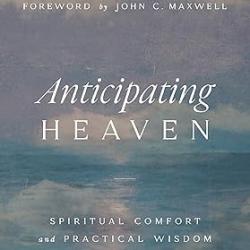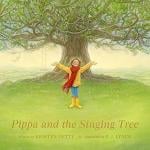The latest book in the ongoing “Reclaiming the Christian Intellectual Tradition” series, Ted Newell’s Education: A Student’s Guide offers a thoughtful outline of the contours of some of the critical moments of the last two millennia of education.
Specifically, Newell explores education through the centuries using a couple of different filters. First, is the filter of the written curriculum, the null curriculum, and the hidden curriculum. (21-26). That is, education always involves the stated (written) materials explicitly being taught, the materials being intentionally left out (null), and the materials taught not because anyone intends to teach them, but because they are part of the shared cultural assumptions of the society (hidden).
The second filter involves examining how an educational approach conveys processes central to any society, including:
“Memory: A community recalls and recasts its history or recent events in light of its master narrative.
Vision: A community draws on its master narrative to life up its Vision as a preferred future, a hope worth living for.
Symbols: Symbols and rituals recapitulate the master narrative in which the society lives. Shared Symbols and rituals include and initiate new members of a community.
Ethos: The animating narrative generates a way of life. An Ethos is a master narrative’s right way of living….
Discipline learning expresses Memory, Vision, Symbols, and Ethos in its content and processes. (18-19)”

Each of these filters is then applied to various historical stages of educational development (with an obvious and important focus on how Christians have educated ourselves and others). Newell begins with Jesus’ method of educating his disciples. He then explores education in the New Testament and the Roman world, followed by education in the Middle Ages. We then get a chapter on Empiricism and another on Progressivism, the two educational movements which have most defined our thought on the subject in the modern world. Finally, he ends with a reflection on the future of Christian education.
Overall, this short introduction is interesting and useful as a flyover of a huge swatch of the history of education theory. And yet, there are a couple of problems here: first, it’s a bit too high as a flyover. Two thousand years is probably too long to try to cover in a ~125 page book, even if only as an introduction. This problem is compounded by the fact that two of the chapters (about a fifth of the book) focus primarily on the New Testament era. I don’t think these chapters should have been removed, but I do think that we could have used a bit more about other time periods/pedagogical movements.
Second, the book bounces back and forth a bit between “higher ed” and “lower ed.” (Okay, so we’re not supposed to call it “lower ed.” But you know what I mean.) I suspect some of this is unavoidable, given that once upon a time higher ed was the only game in town. And yet, I think there is something of a disconnect that necessarily develops when this kind of mingling happens. Educating adults (even if those adults are only thirteen and happen to live in the Middle Ages at a Cathedral) is always going to be a fundamentally different matter than educating children. The difference here could have stood a bit more scrutiny.
Still, I’m happy to recommend this book as a good place to start thinking about just what it is those of us who teach are trying to do, regardless of the level of our classroom.
Dr. Coyle Neal is co-host of the City of Man Podcast and an Associate Professor of Political Science at Southwest Baptist University in Bolivar, MO













